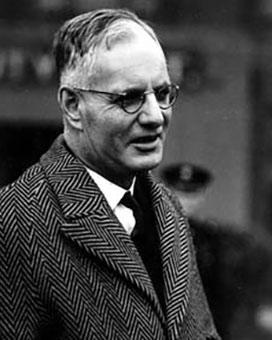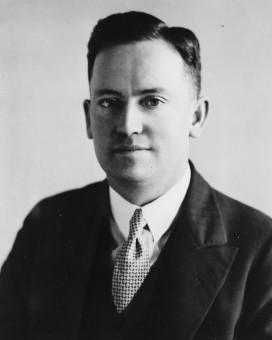About John Curtin

- Born: 8 January 1885
- Died: 5 July 1945
- Partner: Elsie Curtin
- Political party: Australian Labor Party
- Image: NAA: A5954, 661/12
Australia's 14th Prime Minister is widely regarded as one of the greatest. John Curtin’s achievement rests on his leadership of the nation during much of World War II. Curtin rejected the British strategy for the deployment of Australian troops in Burma. He insisted they be used for the defence of New Guinea and Australia. In a remarkable move, Curtin also put US General Douglas MacArthur in charge of Australia's defence forces in the south-west Pacific. Although he had been a strong opponent of conscription during World War I, as leader during the 1939-45 conflict, Curtin decided to send conscripted troops to serve outside Australia.
Curtin was also intent on ensuring that Australia emerge from the war free from the unemployment problems of the 1930s. He aimed for a policy of work for all who wanted it, arguing this could be achieved in peacetime as it had in war.
John Curtin died in office, on 5 July 1945, just 6 weeks before the end of the war in the Pacific.
Did you know?
John Curtin:
- was the only prime minister to have been in jail (as an anti-conscriptionist in 1916)
- was one of only two prime ministers from Western Australia (Bob Hawke was the other), although it was the birthplace of neither
- held no ministerial posts before taking office
- opposed conscription during World War I, but introduced limited overseas service for conscripts in World War II
- was one of the three prime ministers who died in office (Joseph Lyons died in 1939 and Harold Holt in 1967), but the only one to die at The Lodge
- neither owned, nor drove, a car
- was commemorated with the opening of Australia's first prime ministerial library: John Curtin Prime Ministerial Library








